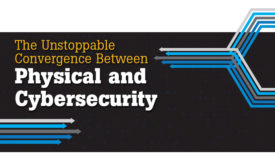Management
How to ease security fatigue with multi-factor authentication.
Read More
How Your Organization Can Best Manage Severe Winter Weather
Get Ahead of Storms with Planning & Teamwork
April 2, 2018
The Unstoppable Convergence Between Physical and Cybersecurity
A combination of cyber and physical defense is not only inevitable, but can make enterprise security stronger.
April 1, 2018
Cyber Response Fatigue Management: Overlooked and Undervalued
Are Cyber Professionals Too Exhausted to Monitor for Attacks?
March 29, 2018
4 Trends Driving Security Operations Centers
How the SOC Creates Customer Confidence
March 22, 2018
Beyond Passwords: How Security Can Improve Identity in 2018
In 2018, enterprises will increasingly look to a future beyond passwords.
March 15, 2018
Sign-up to receive top management & result-driven techniques in the industry.
Join over 20,000+ industry leaders who receive our premium content.
SIGN UP TODAY!Copyright ©2024. All Rights Reserved BNP Media.
Design, CMS, Hosting & Web Development :: ePublishing













